Your cart is currently empty!
Blog
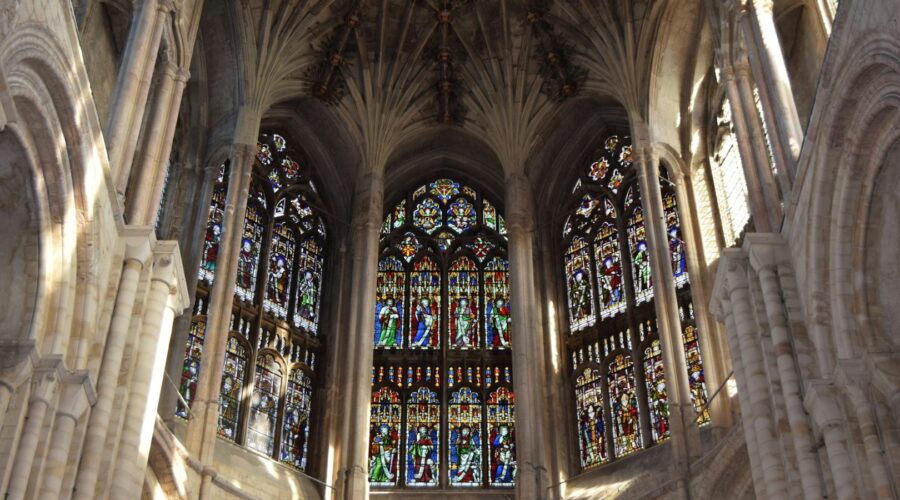
EWTN Schedule: A Comprehensive Guide to the Catholic Television Network
Introduction
EWTN (Eternal Word Television Network) is a global Catholic television network that broadcasts a wide range of programs, including news, documentaries, talk shows, and live Masses. Founded in 1981, EWTN is available in over 140 countries and reaches over 300 million households worldwide.
EWTN Program Schedule
EWTN’s program schedule is diverse and offers something for everyone, including daily Mass, spiritual guidance, informative news, and entertaining talk shows. Here’s a breakdown of the schedule:
Daily Mass
* Monday-Friday: 8:00 AM ET, 11:30 AM ET, 5:00 PM ET
* Saturday: 12:00 PM ET
* Sunday: 6:00 AM ET, 10:00 AM ET, 12:00 PM ET, 3:00 PM ET, 5:00 PM ET, 8:00 PM ETReligious Programming
* The Daily Word: Daily devotionals with Father Michael Gaitley (Monday-Saturday at 8:30 AM ET)
* Amazing Grace: Interviews with people who have experienced profound spiritual transformations (Monday-Friday at 1:00 PM ET)
* The Journey Home: Stories of converts to the Catholic faith (Monday-Friday at 7:00 PM ET)
* EWTN Live: Daily news and interviews (Monday-Friday at 5:30 PM ET)Talk Shows
* The World Over Live: Current events discussions with Raymond Arroyo (Monday-Friday at 10:30 AM ET)
* Catholicism: In-depth discussions on Catholic doctrine and morality (Monday-Friday at 1:30 PM ET)
* The Drew Mariani Show: Interviews with Catholic leaders and experts (Monday-Friday at 4:00 PM ET)Documentaries and Specials
* EWTN Originals: Award-winning documentaries on a variety of religious topics
* Life on the Rock: History of the Catholic Church (Tuesday at 11:30 PM ET)
* Pilgrimage: Visits to Catholic shrines around the world (Wednesday at 11:30 PM ET)How to Access EWTN
EWTN is available on various platforms, including:
* Cable and Satellite TV: Check with your local provider for channel information.
* Livestream: Watch EWTN live on their website or mobile app.
* Smart TVs: Access EWTN through streaming apps like Amazon Fire TV and Roku.
* YouTube: Subscribe to EWTN’s YouTube channel for access to live streams and videos.Additional Features
EWTN offers several additional features to enhance your viewing experience:
* EWTN Player: Record and save shows to watch later.
* On Demand Content: Access a vast library of past programs at your convenience.
* EWTN Radio: Listen to Catholic radio programs 24/7.Conclusion
EWTN provides a rich and diverse program schedule that caters to the needs of Catholics worldwide. From daily Mass and religious programming to informative news and engaging talk shows, EWTN offers something for everyone. Whether you’re seeking spiritual guidance, educational content, or entertainment, EWTN is a valuable resource for Catholics and anyone interested in the Catholic faith.
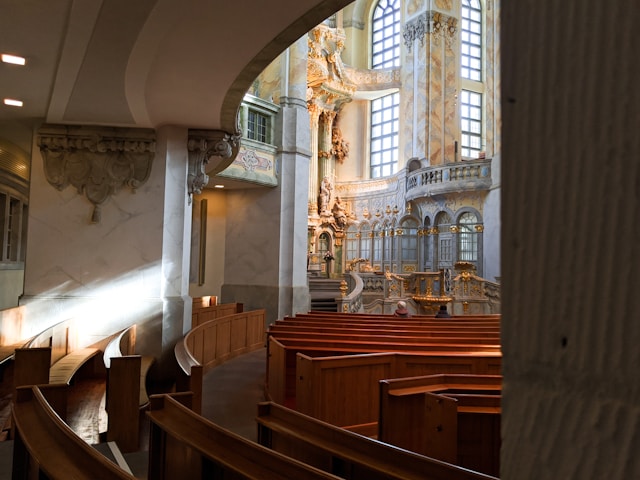
Discover the Enchanting History and Significance of the Church of the Holy Spirit
A Journey Through History and Spirituality
Nestled amidst the heart of vibrant cities or tranquil countryside, the Church of the Holy Spirit has stood as a beacon of faith for centuries. Its captivating history and profound significance have left an enduring legacy on Christian worship and spirituality. Let us embark on a journey to explore the captivating tapestry of this sacred institution.
Origins and Early Beliefs
The concept of the Holy Spirit holds deep roots in Christian theology, dating back to the teachings of Jesus Christ. According to biblical accounts, the Holy Spirit descended upon the disciples at Pentecost, empowering them to spread the Gospel and perform miracles. This outpouring of the Holy Spirit marked the birth of the Christian Church.
Early Christian communities considered the Holy Spirit to be the third person of the Trinity, alongside God the Father and Christ the Son. The Spirit was believed to guide and inspire the faithful, providing divine strength and wisdom.
The Rise of Holy Spirit Churches
As Christianity spread throughout the Roman Empire, churches dedicated specifically to the Holy Spirit began to emerge. One of the earliest known examples was the Church of the Holy Spirit in Rome, built in the 5th century. This church served as a focal point for pilgrims and worshippers seeking spiritual renewal.
Over time, churches of the Holy Spirit gained prominence in various regions of Europe. They became centers of learning, religious education, and community outreach. Many of these churches developed unique traditions and practices related to the veneration of the Holy Spirit.
Architectural Marvels and Artistic Treasures
The Church of the Holy Spirit often showcased exceptional architectural craftsmanship and artistic splendor. The following are some notable examples:
Church of the Holy Spirit, Krakow, Poland
This Gothic masterpiece features a soaring nave, intricate stained glass windows, and elaborate altarpieces. Its construction spanned several centuries, showcasing the evolving architectural styles of the period.
Church of the Holy Spirit, Heidelberg, Germany
Renowned for its Baroque opulence, this church boasts a grand interior adorned with opulent frescoes, gilded carvings, and a majestic organ.
Church of the Holy Spirit, Goa, India
A testament to the Portuguese colonial legacy in India, this church exhibits a fusion of European and Indian architectural elements. Its interiors are adorned with colorful tiles and intricate woodwork.
Liturgy and Devotional Practices
Churches of the Holy Spirit developed distinctive liturgical practices and devotional traditions. Mass often included special hymns, prayers, and readings that honored the Holy Spirit.
Veneration of the Holy Spirit
Throughout history, the Holy Spirit has been venerated as a powerful intercessor and source of grace. Many churches have instituted special devotions, such as novenas and litanies, dedicated to invoking the Spirit’s presence.
Feast of Pentecost
The Church of the Holy Spirit celebrates the Feast of Pentecost annually, commemorating the descent of the Holy Spirit upon the apostles. This festival is often marked by special services, processions, and community gatherings.
Modern-Day Significance
In contemporary Christianity, the Church of the Holy Spirit continues to play a vital role:
Charismatic and Pentecostal Movements
Many charismatic and Pentecostal churches emphasize the power of the Holy Spirit in their worship and practices. They believe in spiritual gifts, such as speaking in tongues and prophecy, as manifestations of the Spirit’s presence.
Renewal and Transformation
The Holy Spirit is often associated with hope, renewal, and transformation. Churches of the Holy Spirit serve as beacons of spiritual growth and community engagement, working to bring about positive change in their congregations and the wider world.
Ecumenical Dialogue
The Church of the Holy Spirit provides a common ground for ecumenical dialogue among different Christian denominations. By focusing on the shared belief in the Holy Spirit, churches can bridge theological differences and promote unity.
Conclusion
The Church of the Holy Spirit stands as a testament to the enduring power of faith and the transformative nature of the Holy Spirit. From its ancient origins to its modern-day significance, this sacred institution continues to inspire, guide, and connect believers across generations. Whether you seek spiritual renewal, artistic splendor, or a deeper understanding of Christian history, the Church of the Holy Spirit awaits you with open arms.
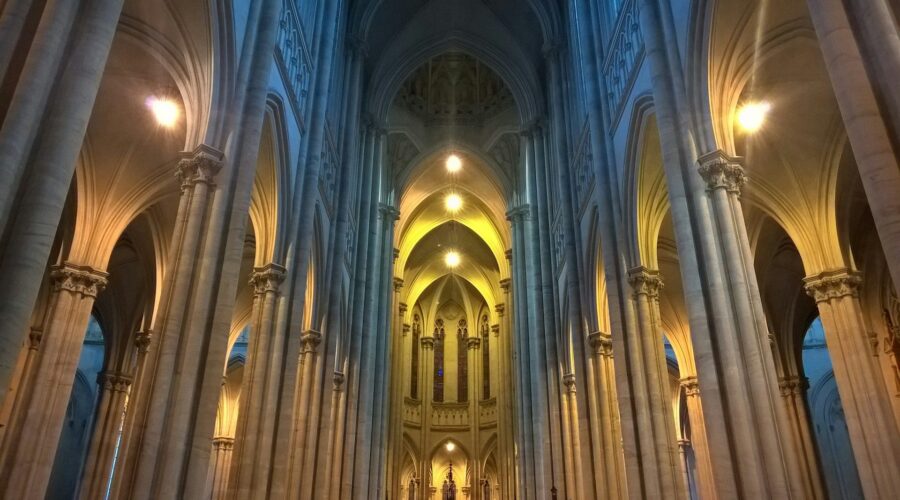
Unveiling the Redeemer: A Comprehensive Exploration of Salvation’s Hope
Introduction
Throughout history, humanity has yearned for a savior, a redeemer who would deliver them from suffering and restore hope. The concept of a redeemer is deeply intertwined with religious beliefs and spiritual aspirations. In this blog post, we delve into the multifaceted nature of the redeemer, exploring its biblical, historical, and cultural significance.
Biblical Perspective on the Redeemer
The Old Testament: Waiting for the Messiah
In the Old Testament, the idea of a redeemer was central to the covenant relationship between God and the Israelites. The prophets foretold of a coming Messiah, a descendant of King David, who would liberate God’s people from oppression and establish a kingdom of peace and justice.
The Messiah in the New Testament: Jesus Christ
Christians believe that Jesus Christ is the fulfillment of the Old Testament prophecies about the Messiah. According to the New Testament, Jesus came to earth to redeem humanity from sin and reconcile them with God. Through his death and resurrection, he became the ultimate redeemer, offering salvation and eternal life.
Historical Context of Redemption
The concept of redemption has played a significant role in various historical and cultural contexts:
- Ancient Slavery: In ancient societies, redemption could refer to the act of paying a ransom to free a slave or captive.
- Feudal Europe: During the feudal era, peasants could seek redemption from their feudal obligations through payments or services.
- Social Redemption Movements: Throughout history, there have been social movements aimed at redeeming or liberating marginalized or oppressed groups.
Redemption in Different Cultures
The concept of redemption is not limited to Christian theology. It can be found in various cultures and belief systems:
- Buddhism: In Buddhism, redemption is achieved through the attainment of enlightenment, which liberates individuals from suffering.
- Hinduism: Hindus believe in a cycle of birth, death, and rebirth. Redemption can be achieved by breaking this cycle through spiritual practices.
- Native American Spirituality: Many Native American cultures hold beliefs about a redeemer figure who will bring harmony and balance to the world.
Aspects of Redemption
The concept of redemption encompasses several key aspects:
- Reconciliation: Redemption involves restoring a broken relationship or mending a state of separation.
- Liberation: It entails freeing individuals from bondage, oppression, or negative circumstances.
- Transformation: Redemption often involves a change or transformation in the individual’s life.
- Hope: The hope of redemption gives people the strength to persevere through challenges and strive for a better future.
Applying the Concept of Redemption
The concept of redemption can have practical applications in our daily lives:
- Forgiveness: Offering forgiveness can be an act of redemption, restoring relationships and healing wounds.
- Self-Improvement: Seeking personal redemption can involve making amends for past mistakes and striving for growth.
- Social Justice: Working towards social justice and equality can be seen as a form of redeeming society from its ills.
- Environmental Stewardship: Caring for the environment can be considered an act of redemption, restoring balance and preserving the planet for future generations.
Conclusion
The concept of the redeemer is a powerful and multifaceted one that transcends religious, cultural, and historical boundaries. From the biblical prophecies of a Messiah to social movements seeking redemption for the oppressed, the idea of hope and liberation resonates with the human spirit. By exploring the various aspects and applications of redemption, we gain a deeper understanding of our own potential for transformation and the role we can play in redeeming the world around us.
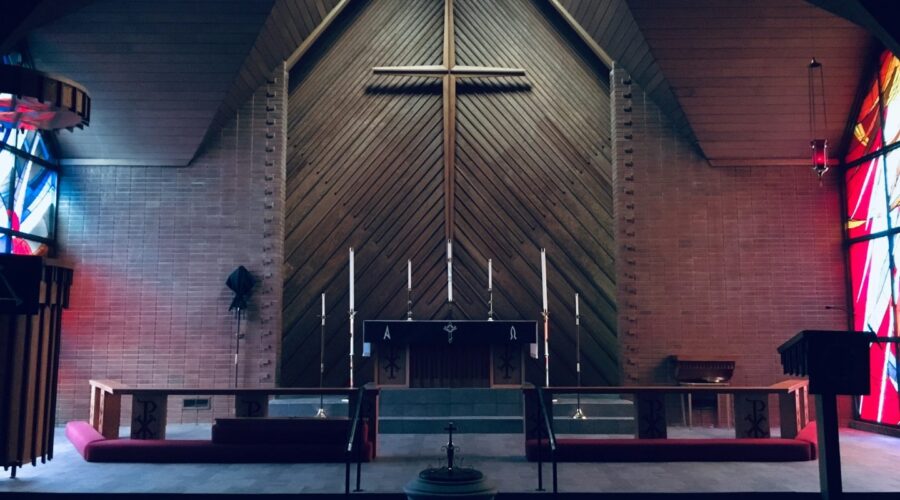
95 Theses: A Catalyst for the Protestant Reformation
Introduction
The 95 Theses, penned by Martin Luther in 1517, marked a pivotal moment in Christian history, sparking the Protestant Reformation. This document outlined Luther’s grievances against the Catholic Church, particularly its practices related to indulgences and the authority of the Pope.
Context
Indulgences
Indulgences were a system within the Catholic Church where individuals could purchase a pardon for sins, reducing their time in purgatory. The sale of indulgences had become a lucrative business, with the profits often used to fund lavish projects and personal enrichment.
Authority of the Pope
Catholic doctrine held that the Pope, as the successor of Peter, had absolute authority over the Church. Luther challenged this notion, arguing that the Bible should be the sole authority for Christian practice.
The 95 Theses
Content
The 95 Theses consisted of a series of propositions, each addressing a specific issue with the Catholic Church. Key points included:
- Indulgences do not remit the guilt of sins.
- The Pope has no authority to forgive sins.
- True repentance involves sorrow for sin and a change of heart, not the purchase of indulgences.
- The Bible is the only infallible authority for Christian faith and practice.
Distribution
Luther posted his theses on the door of the Castle Church in Wittenberg, Germany, on October 31, 1517. This was a common practice for scholars to engage in academic debates.
Impact
Spread of Ideas
Thanks to the recent invention of the printing press, Luther’s ideas spread rapidly throughout Europe. Within two weeks, copies of the theses had reached major cities across Germany.
Support and Opposition
Luther’s theses resonated with many people who had grown weary of the abuses within the Catholic Church. However, he also faced fierce opposition from Church authorities.
Excommunication
In 1520, Pope Leo X issued a papal bull excommunicating Luther for heresy. Luther responded by publicly burning the papal bull, signaling a complete break with the Catholic Church.
Legacy
Religious Division
The 95 Theses sparked a religious divide in Europe, leading to the formation of Protestant churches that broke away from the Catholic Church.
Reform within Catholicism
Despite opposing Luther’s ideas, the Catholic Church recognized the need for reform. The Council of Trent (1545-1563) instituted changes to address concerns raised by Luther and other reformers.
Inspiration for Change
The 95 Theses continue to inspire individuals and movements seeking change in various spheres, from religious reform to social justice.
Additional Information
Famous Quotes
- “Here I stand, I can do no other.” – Martin Luther at the Diet of Worms in 1521.
Timeline
Date Event 1517 Luther posts the 95 Theses. 1520 Luther is excommunicated. 1545-1563 Council of Trent. Related Links
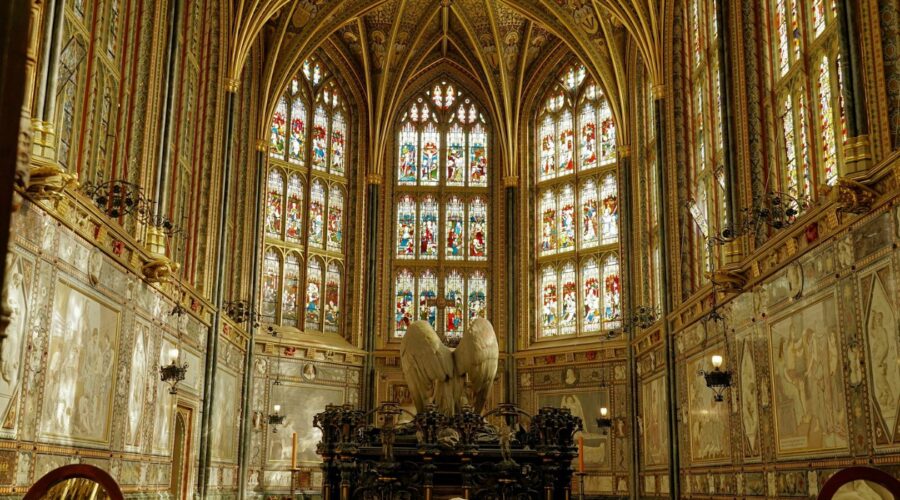
Remnant Fellowship Church: A Comprehensive Guide to Understanding
Introduction
Remnant Fellowship Church is a charismatic Pentecostal Christian megachurch based in Shreveport, Louisiana. Founded by pastor Tony Spell in 2002, the church has gained notoriety for its controversial teachings and practices.
In this comprehensive guide, we will delve into various aspects of Remnant Fellowship Church, including:
- History and Beliefs
- Controversies and Legal Issues
- Membership and Community Outreach
- Leadership and Organization
li>Analysis and Conclusion
History and Beliefs
Foundation and Growth
Remnant Fellowship Church was established by Tony Spell in 2002 as Life Tabernacle Church. The church initially operated from a rented building but later moved to its current location in 2007. Under Spell’s leadership, Remnant Fellowship has experienced significant growth and now has a congregation of thousands.
Core Beliefs
Remnant Fellowship Church adheres to fundamentalist Pentecostal doctrines, including:
- The inerrancy of the Bible
- The Trinity (God the Father, Son, and Holy Spirit)
- The Virgin Birth of Jesus Christ
- The power of the Holy Spirit to transform lives
- The imminent return of Jesus Christ
Controversies and Legal Issues
Remnant Fellowship Church has been involved in numerous controversies and legal battles, including:
COVID-19 Pandemic
During the COVID-19 pandemic, Spell defied lockdown orders by continuing to hold large church gatherings. He was arrested in 2020 for violating stay-at-home orders.
Child Abuse Allegations
In 2021, Spell was arrested on multiple counts of child abuse and cruelty to juveniles. The charges stemmed from allegations that he whipped children at the church’s school, Life Tabernacle Christian Academy.
Other Controversies
Remnant Fellowship Church has also faced criticism for its anti-LGBTQ+ stance, its financial practices, and its affiliation with controversial political figures.
Membership and Community Outreach
Remnant Fellowship Church has a large and diverse membership. The church offers a range of programs and ministries, including:
- Sunday services and midweek Bible studies
- Children’s and youth programs
- Community outreach initiatives, such as food banks and clothing distribution
Leadership and Organization
Pastor Tony Spell
Pastor Tony Spell is the founder and senior pastor of Remnant Fellowship Church. He is known for his charismatic preaching style and controversial public statements.
Governance and Oversight
Remnant Fellowship Church is governed by a board of elders who are elected by the congregation. The elders are responsible for overseeing the church’s finances, leadership, and overall functioning.
Analysis and Conclusion
Remnant Fellowship Church is a complex and multifaceted organization. Its controversial teachings and practices have made it a subject of intense debate and scrutiny.
While the church has a significant following and offers some positive community outreach programs, its history of legal issues and its association with hate speech and discrimination raise concerns about the church’s overall impact on society.
As the church continues to grow and evolve, it remains to be seen whether it will address its controversies and adopt a more inclusive and responsible approach to ministry.
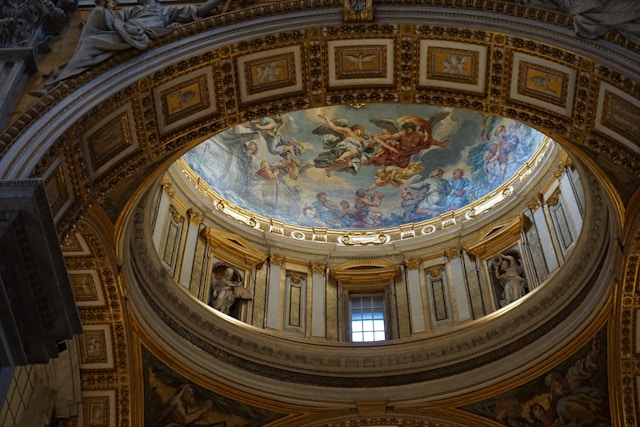
Discover Redeemer Community Church: A Spiritual Oasis in the Heart of Your City
Are you seeking a vibrant and inclusive Christian community where you can deepen your faith and connect with like-minded individuals? Look no further than Redeemer Community Church, a beacon of spiritual growth and community service in the heart of your city.
A Journey of Faith and Belonging
Our Mission
Redeemer Community Church is dedicated to providing a welcoming and supportive environment where individuals from all walks of life can encounter the transformative power of the Gospel. Our mission is to:
- Foster spiritual growth and discipleship
- Build a strong and connected community
- Serve our neighborhood and the wider world
Our Vision
We envision a community that is:
- Rooted in the love of God
- Empowered by the Holy Spirit
- Committed to making a positive impact
A Vibrant and Welcoming Community
At Redeemer Community Church, you’ll find a diverse and welcoming community of believers who are committed to serving others and living out their faith in practical ways.
Ministries and Fellowship
We offer a wide range of ministries and fellowship opportunities to meet the needs of individuals and families of all ages, including:
- Bible studies
- Small groups
- Youth and children’s programs
- Community outreach initiatives
Inclusive and Welcoming
We believe that everyone is welcome at Redeemer Community Church, regardless of their background, beliefs, or life experiences. We strive to create a safe and supportive environment where all individuals feel valued and respected.
Our Services and Worship
Our weekly worship services are a time to gather, connect, and deepen our relationship with God. We offer a variety of service times and styles to accommodate the needs of our community:
Sunday Services
- Contemporary Service: 9:30 AM | Music: Live band and vocals
- Traditional Service: 11:00 AM | Music: Organ and choir
Wednesday Night Service
Community Night: 6:30 PM | Includes Bible study, prayer, and fellowship
Special Events and Retreats
Throughout the year, we host special events, conferences, and retreats designed to deepen our faith and connect with others in our community.
Giving and Outreach
As a Christian community, we believe that giving back is an essential part of our discipleship. We encourage our members to give generously to support the work of our church and to make a positive impact in our neighborhood and the wider world.
Outreach Programs
We are committed to serving our community through various outreach programs, including:
- Food pantry
- Clothing drives
- Tutoring and mentoring programs
Financial Support
There are several ways you can financially support Redeemer Community Church:
- Regular giving: Weekly or monthly automatic donations
- One-time donations: Make a single gift to support a specific project or program
- Bequests: Include Redeemer Community Church in your will or estate plan
Connect and Get Involved
We invite you to connect with Redeemer Community Church and experience the transformative power of faith and community firsthand. Here’s how you can get involved:
- Visit our website or call us at (555) 123-4567 to learn more
- Attend a worship service or community event
- Join a small group or Bible study
- Volunteer your time to serve others
Frequently Asked Questions (FAQs)
Q: What is the difference between the contemporary and traditional services?
A: The contemporary service features live music, praise songs, and a modern style of worship. The traditional service includes organ music, hymns, and a more formal liturgy.
Q: Is Redeemer Community Church a large church?
A: Yes, Redeemer Community Church is a large church with over 1,000 members. We are known for our vibrant and welcoming community.
Q: What is the dress code for services?
A: We do not have a specific dress code. We encourage attendees to dress comfortably and respectfully.
Q: How can I get involved in outreach programs?
A: To get involved in our outreach programs, please contact our Community Outreach Team at [email protected].
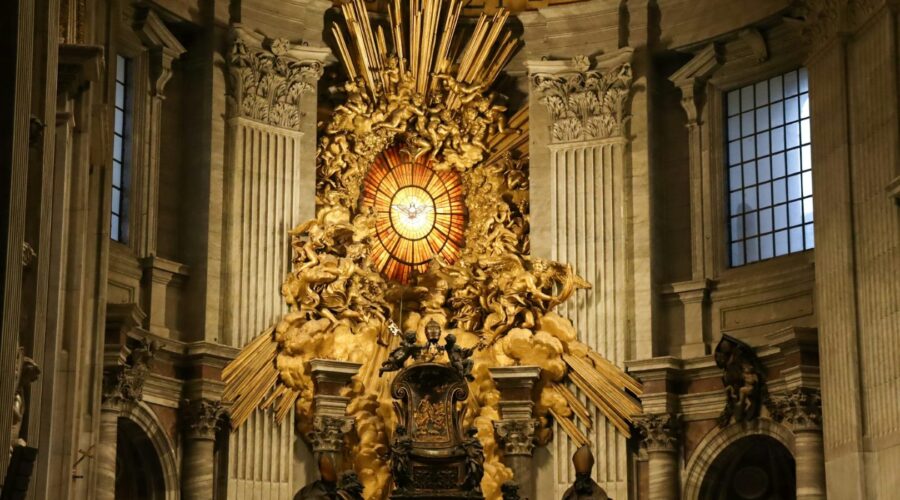
A Comprehensive Guide to First Communion: A Sacrament of Faith and Tradition
Introduction
First Communion, also known as the Eucharist, is a significant milestone in the lives of young Catholic Christians. This sacred rite marks the first time children receive the bread and wine that symbolize the body and blood of Jesus Christ. It is a special occasion filled with joy, tradition, and spiritual growth. This guide provides a comprehensive overview of First Communion, its history, significance, preparation process, and celebration.
The History and Significance of First Communion
Origins
The practice of First Communion can be traced back to the early Christian Church. The Didache, an early Christian text, describes a rite of baptism and anointing that included the distribution of bread and wine. Over time, this practice evolved into a separate sacrament known as the Eucharist, which was reserved for baptized Christians.
Significance in Catholicism
In the Catholic Church, First Communion is considered one of the seven sacraments. It is believed that through the Eucharist, the faithful receive the grace and presence of Christ, strengthening their bond with God and the Church community. For young children, First Communion is a memorable and meaningful step in their faith journey, as it marks their full initiation into the Catholic community.
Preparation for First Communion
Religious Education
Children typically begin preparing for First Communion around the age of seven or eight. They participate in religious education classes, where they learn about the history, beliefs, and practices of the Catholic Church. They study topics such as the Trinity, the Bible, the Mass, and the importance of prayer.
Sacrament of Reconciliation
Before receiving their First Communion, children are encouraged to receive the Sacrament of Reconciliation. This involves confessing their sins to a priest and receiving forgiveness. Reconciliation allows children to make a clean break with the past and approach Communion with a pure heart.
Parental and Parish Support
Parents and the parish play an essential role in preparing children for First Communion. Parents help their children understand the significance of the sacrament and support them throughout the preparation process. The parish provides the resources and guidance necessary for a meaningful celebration.
The Celebration of First Communion
The Mass
First Communion is typically celebrated within the context of a Mass, which is the central act of worship in the Catholic Church. The Mass includes readings from Scripture, a homily, and the distribution of Communion.
Receiving Communion
The moment of receiving Communion is the culmination of the preparation process. Children approach the altar and receive a small piece of bread (the body of Christ) and a sip of wine (the blood of Christ).
Rite of Confirmation
In some dioceses, the Rite of Confirmation may be celebrated immediately following First Communion. Confirmation is a sacrament that strengthens the baptismal gift of the Holy Spirit and completes the process of Christian initiation.
Gifts and Celebrations
Traditional Gifts
Traditionally, children receive gifts that symbolize their new status as communicants. These gifts often include a Bible, a rosary, a crucifix, or a prayer book.
Celebrations
Families and parishes often celebrate First Communion with special dinners, parties, or other gatherings. These celebrations provide an opportunity to recognize the importance of the occasion and to share joy with loved ones.
Tips for Parents
Talk to Your Child
Open and honest communication is essential. Talk to your child about the significance of First Communion in a way that they can understand.
Attend Religious Education Classes
Encourage your child to attend religious education classes regularly and participate actively.
Make it a Special Occasion
Plan a special celebration that includes family and friends to mark this important milestone in your child’s life.
Be Patient and Supportive
The preparation process can take time and effort. Be patient and supportive of your child throughout their journey.
Focus on the Spiritual Significance
While the celebration is important, remember that the focus should be on the spiritual significance of First Communion. Help your child understand the sacrament’s meaning and its role in their faith.
Additional Resources
Catholic Catechism: http://www.vatican.va/archive/ccc_toc.htm
United States Conference of Catholic Bishops: https://www.usccb.org
Your Local Parish Website
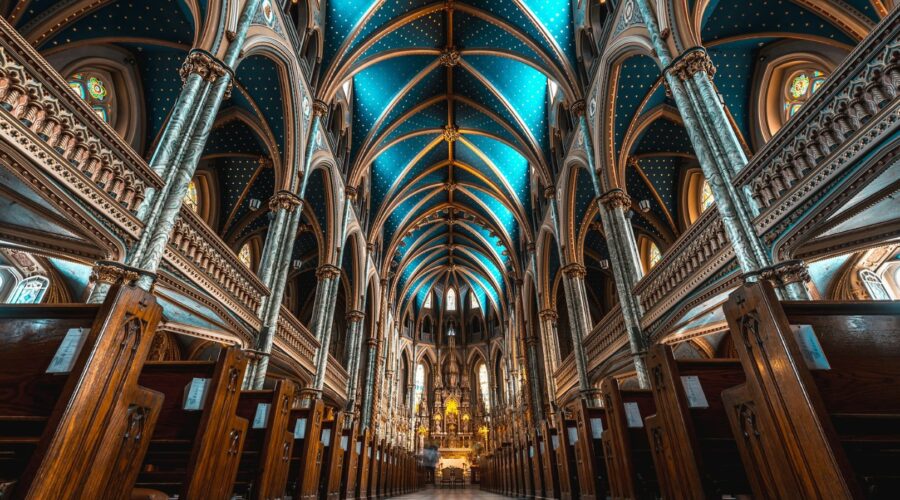
Unveiling the Historic Legacy of St Agnes Church: A Timeless Beacon of Faith
Introduction
St Agnes Church, a hallowed sanctuary standing proudly in the heart of London, has borne witness to centuries of history. Its intricate architecture, poignant memorials, and enduring spiritual presence have captivated generations of worshippers and visitors alike. This comprehensive guide will delve into the rich tapestry of St Agnes Church, exploring its architectural splendor, historical significance, and its role as a vibrant spiritual community.
Architectural Masterpiece
Built in the 13th century, St Agnes Church is a testament to the enduring legacy of medieval craftsmanship. Its exterior façade, an intricate symphony of stone, features a magnificent rose window, graceful pointed arches, and buttresses that soar towards the heavens. The interior, bathed in ethereal light, boasts a nave adorned with delicate columns and vaulted ceilings. The chancel, the most sacred space within the church, is adorned with a reredos depicting scenes from the life of Christ.
The Central Tower
The most striking feature of St Agnes Church is its central tower, a majestic landmark that commands the skyline of the surrounding neighborhood. Rising to a height of over 100 feet, the tower is crowned by a lead-covered spire that has weathered countless storms. The tower houses a set of bells, which ring out melodiously, summoning the faithful to worship and marking special occasions.
The Stained Glass Windows
The stained glass windows of St Agnes Church are breathtaking masterpieces that flood the interior with vibrant hues. Dating back to the Victorian era, these windows depict biblical scenes, saints, and angels. The west window, in particular, is a stunning spectacle, showcasing the crucifixion of Jesus Christ in intricate detail. These windows not only enhance the beauty of the church but also serve as a visual narrative, telling stories of faith, sacrifice, and divine love.
Historical Significance
St Agnes Church has played a pivotal role in the history of London. It has witnessed countless events that have shaped the city’s social, political, and religious landscape.
The Great Fire of London
In 1666, the Great Fire of London devastated much of the city, but St Agnes Church miraculously survived. The church became a sanctuary for those who had lost their homes and a symbol of hope amidst the ashes. The present church building was largely rebuilt after the fire, incorporating elements of both the original medieval structure and the post-fire restoration.
Royal Connections
Throughout its history, St Agnes Church has welcomed royalty within its hallowed walls. In 1547, King Edward VI attended a service at the church. Queen Elizabeth I also visited St Agnes Church during her reign, and her coat of arms can still be seen on the north wall of the chancel.
Social Justice and Community
St Agnes Church has a long tradition of working for social justice and supporting the local community. In the 19th century, the church was instrumental in establishing a soup kitchen and a school for the poor. Today, the church continues to engage in outreach programs, providing food, shelter, and counseling to those in need.
Spiritual Heartbeat
Beyond its architectural and historical significance, St Agnes Church is first and foremost a place of worship and spiritual growth.
Liturgical Tradition
St Agnes Church is an active parish within the Anglican Communion. It follows a traditional liturgical calendar, with services held throughout the week. The Holy Eucharist, the central act of worship in the Anglican tradition, is celebrated regularly. The church also hosts a variety of special services, such as baptisms, confirmations, and weddings.
Music and the Arts
Music plays an integral role in the spiritual life of St Agnes Church. The church has a fine organ, which is used to accompany services and recitals. The church choir, renowned for its beautiful harmonies, leads the congregation in worship and performs a wide repertoire of sacred music. St Agnes Church also hosts art exhibitions and concerts, providing a platform for artists to share their work and inspire the community.
Prayer and Meditation
St Agnes Church is a place of quiet reflection and prayer. The Lady Chapel, a peaceful sanctuary, is dedicated to the Virgin Mary and offers a tranquil space for personal devotion. The church also hosts regular prayer groups and silent retreats, providing opportunities for worshippers to deepen their spiritual connection.
Visiting St Agnes Church
St Agnes Church is a popular destination for tourists and pilgrims. Here are some tips for planning your visit:
- Location: St Agnes Church is located in the heart of London, just a short walk from the Barbican Underground Station on the Circle and Hammersmith & City Lines.
- Visiting Hours: The church is open daily from 8:00 am to 6:00 pm.
- Services: Regular services are held throughout the week, including Sunday services at 8:00 am, 10:00 am, and 6:00 pm.
- Tours: Guided tours of the church are available by appointment. Please contact the church office for more information.
Conclusion
St Agnes Church is a true treasure that has stood the test of time. Its architectural splendor, historical significance, and vibrant spiritual heartbeat make it a pilgrimage site for those seeking beauty, meaning, and a connection with the divine. Whether you are a seasoned Londoner or a first-time visitor, a visit to St Agnes Church promises an unforgettable experience that will leave an enduring mark on your soul.

Unlocking Relevance: A Guide to Building a Vibrant and Engaging Church
1. Defining Church Relevance
In the ever-evolving tapestry of modern society, church relevance holds paramount importance. A relevant church is one that resonates with the needs, aspirations, and values of the communities it serves. It goes beyond traditional Sunday services, embracing a multi-faceted approach that encompasses outreach, service, and a deep connection with its congregation.
2. Key Dimensions of Church Relevance
- Authenticity and Transparency: A relevant church fosters a culture of genuineness and openness, where individuals feel valued and understood.
- Community Engagement: It actively participates in the broader community, addressing social issues, providing support, and fostering dialogue.
- Cultural Relevance: The church adapts its message and practices to resonate with the evolving cultural landscape, while maintaining its core values.
- Innovation and Flexibility: It embraces new technologies, creative worship formats, and adaptable programs to remain accessible and relevant.
3. Strategies for Enhancing Church Relevance
- Conduct Community Needs Assessments: Engage with the local community to identify unmet needs and tailor services accordingly.
- Develop a Welcoming and Inclusive Environment: Create a welcoming atmosphere where individuals of all backgrounds feel comfortable and respected.
- Incorporate Technology: Utilize social media, online worship services, and mobile apps to connect with audiences beyond the church walls.
- Foster Intergenerational Relationships: Bridge generational gaps by creating programs and events that bring together young and old.
4. The Importance of a Relevant Church
- Spiritual Enrichment: A relevant church provides a nurturing environment for spiritual growth and connection with God.
- Community Impact: It plays a vital role in addressing social issues, promoting community well-being, and offering support.
- Growth and Expansion: Relevance attracts new members and fosters church growth, ensuring its sustainability.
- Connection to the Divine: A relevant church helps individuals find meaning and purpose in their lives, connecting them with the divine.
5. Case Studies and Examples
- NewSpring Church, South Carolina: Known for its innovative use of technology, engaging worship services, and community outreach programs.
- St. Paul’s Cathedral, London: A historic cathedral that has adapted its message and worship to remain relevant to a diverse and secular congregation.
- Grace Community Church, New York: A vibrant church that focuses on social justice, economic empowerment, and interfaith dialogue.
6. Conclusion
Building a relevant church requires a commitment to understanding the needs of the community, adapting to cultural changes, and embracing innovation. By fostering authenticity, engaging with the community, and incorporating flexible practices, churches can create a welcoming and impactful presence in the lives of their congregations and the wider society.
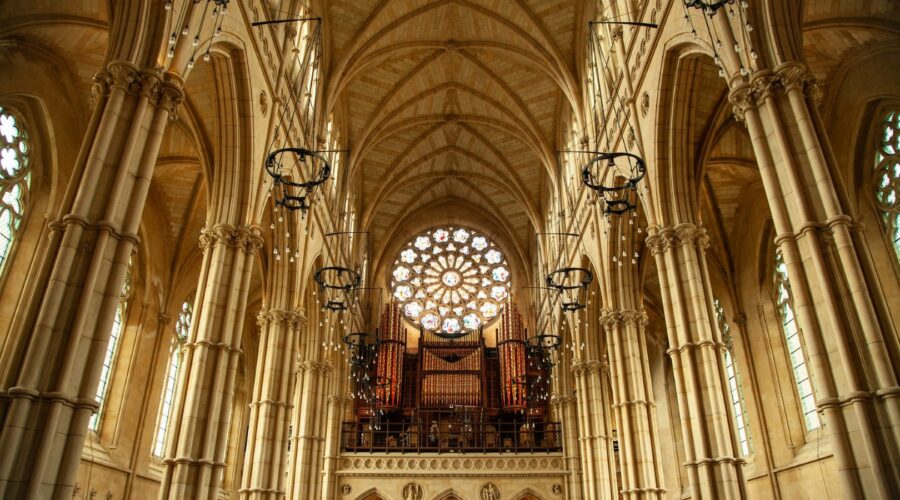
Unveiling the Early Church Fathers: Pillars of Christian Doctrine and Practice
Introduction
The early church fathers were influential Christian theologians, scholars, and bishops who lived during the first five centuries after Christ. They played a pivotal role in shaping the beliefs, practices, and organization of the early Church. This blog post will delve into the lives, writings, and contributions of the early church fathers, providing insights into their significance in the development of Christianity.
Key Figures of the Early Church
Clement of Rome
Clement, the third bishop of Rome, wrote an influential epistle to the church in Corinth around 96 AD. His letter addressed issues of unity, morality, and the role of leadership in the Church.
Ignatius of Antioch
Ignatius, the bishop of Antioch, wrote a series of letters while being transported to Rome for his martyrdom. His writings emphasized the importance of unity with the bishop and the sacrificial nature of Christian living.
Polycarp of Smyrna
Polycarp, the bishop of Smyrna, was a disciple of John the Apostle. His writings preserved important traditions about early Christianity and emphasized the importance of apostolic succession.
Justin Martyr
Justin Martyr, a philosopher and apologist, wrote extensively in defense of the Christian faith. His writings provided a bridge between Greek philosophy and Christian theology.
Irenaeus of Lyons
Irenaeus, the bishop of Lyons, wrote a major work called “Against Heresies.” His writings combatted various Gnostic teachings and defended the apostolic faith.
Contributions to Christian Doctrine
Theology of the Trinity
The early church fathers played a significant role in developing the doctrine of the Trinity, the belief in one God in three persons: the Father, the Son, and the Holy Spirit. Their writings affirmed the deity of Christ and the distinct roles of each person in the Godhead.
Christology
The church fathers developed various understandings of the nature of Christ, referred to as Christology. They debated issues such as the relationship between Jesus’ humanity and divinity, his role as Savior and Messiah, and the virgin birth.
Sacraments and Worship
The early church fathers recognized the importance of sacraments, such as baptism and the Eucharist, as channels of God’s grace. They also shaped the practices of Christian worship, including prayer, liturgy, and the use of Scripture.
Organizational Structure and Leadership
The early church fathers established a hierarchical structure of leadership within the Church. They recognized the role of bishops as successors to the apostles and as overseers of local congregations.
Episcopacy
The concept of episcopacy, the leadership of the Church by bishops, emerged during this period. Bishops were responsible for ordaining clergy, administering sacraments, and maintaining unity within their dioceses.
Synods and Councils
To address doctrinal and disciplinary issues, the early church fathers organized synods and councils. These gatherings brought together bishops from different regions to make decisions on matters of faith and practice.
Influence on Christian Thought and Practice
Preservation of Apostolic Tradition
The early church fathers played a crucial role in preserving and transmitting the teachings of the apostles and the early Christian communities. Their writings and traditions became foundational for later Christian theology and practice.
Development of Creeds and Dogma
The writings of the church fathers contributed to the development of early Christian creeds and dogmas, such as the Nicene Creed and the Athanasian Creed. These statements of faith defined the core beliefs of the Church.
Apologetics and Evangelism
Many early church fathers were apologists who defended the Christian faith against accusations of heresy and paganism. Their writings helped to spread Christianity beyond its initial boundaries and to engage with the intellectual challenges of the time.
Conclusion
The early church fathers were pivotal figures in the development of Christianity. Their writings, teachings, and leadership shaped the beliefs, practices, and organization of the early Church. Their contributions laid the foundation for Christian doctrine, preserved apostolic tradition, and influenced Christian thought and practice for centuries to come.
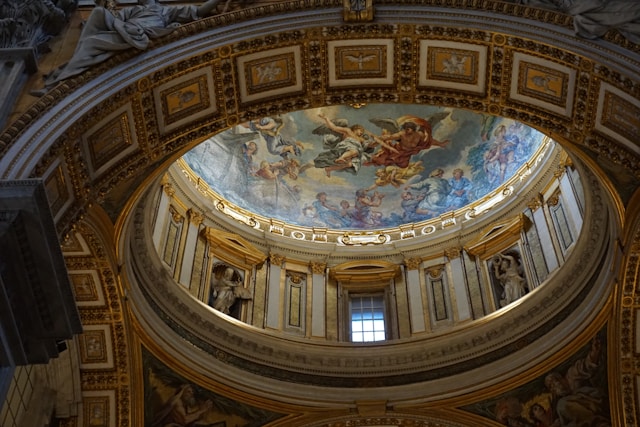
Discover the Heart of Faith at St. Paul Baptist Church
Embark on a spiritual journey to St. Paul Baptist Church, where faith flourishes and community bonds. Established in the heart of [City Name], this vibrant congregation has been a beacon of hope and inspiration for generations.
A Haven of Worship
St. Paul Baptist Church is a sacred space where believers gather to connect with the divine. The sanctuary, adorned with intricate stained glass windows and a soaring ceiling, creates an awe-inspiring atmosphere.
Worship Services
- Sunday Morning Worship: 9:00 AM
- Wednesday Evening Bible Study: 7:00 PM
Sacraments
The church offers the sacraments of baptism, communion, and confirmation to deepen the spiritual bond with Christ.
A Thriving Community
St. Paul Baptist Church extends beyond its walls to foster a strong sense of community among its members.
Community Groups
- Youth Ministry: Engaging programs and activities for young people
- Women’s Ministry: Empowering and connecting women through spiritual growth
- Men’s Ministry: Nurturing faith and leadership among men
Ministry Outreach
The church believes in serving the community beyond its doors. Members engage in various outreach programs, such as:
- Feeding the Hungry: Supporting local soup kitchens and food pantries
- Sheltering the Homeless: Partnering with organizations to provide shelter and care
- Mentoring Youth: Empowering young people through educational and personal development programs
Leadership and Pastors
St. Paul Baptist Church is guided by a team of dedicated leaders and pastors who shepherd the congregation with wisdom and compassion.
Senior Pastor
Rev. Dr. John Smith has served as Senior Pastor for over 20 years. His sermons and leadership inspire and uplift the congregation.
Associate Pastors
- Rev. Mary Jones: Ministering to the spiritual needs of women
- Rev. David Brown: Guiding youth and young adults in their faith journey
Membership and Involvement
Becoming a member of St. Paul Baptist Church is an invitation to join a vibrant and growing community of believers. Membership offers access to various programs and ministries, including:
- Bible Study: In-depth exploration of the scriptures
- Choir and Music Ministry: Lifting up hearts through music
- Sunday School: Nurturing spiritual growth in all ages
Special Events
St. Paul Baptist Church举办各种特别活动来增强社区纽带并庆祝基督教信仰,例如:
- Annual Revival: A time of spiritual renewal and refreshment
- Community Picnic: A fun-filled day of fellowship and outdoor activities
- Christmas Cantata: A musical celebration of the birth of Christ
Location and Contact Information
St. Paul Baptist Church is conveniently located at [Address]. For more information or to schedule a visit, please contact:
- Phone: (555) 123-4567
- Email: [email protected]
- Website: www.stpaulbaptist.org
Conclusion
St. Paul Baptist Church is more than just a building; it is a vibrant and thriving community centered on faith, service, and fellowship. Whether you are seeking spiritual guidance, a sense of belonging, or an opportunity to make a difference, this church welcomes you with open arms.
Join the St. Paul Baptist Church family and embark on a transformative faith journey that will enrich your life and impact the world.
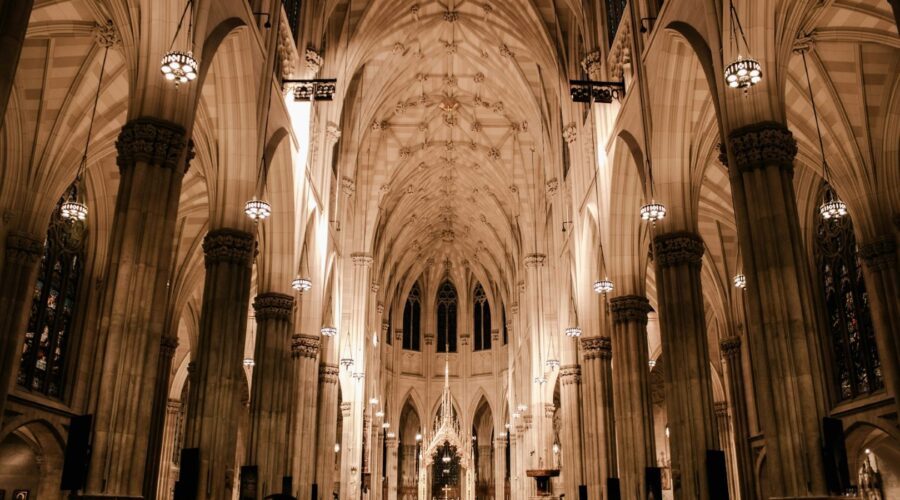
Bishop Lamor Whitehead Church: Unveiling the Controversial Ministry
Introduction
Bishop Lamor Whitehead has become a controversial figure in recent years, attracting both praise and criticism for his flamboyant lifestyle and outspoken sermons. This comprehensive blog post delves into the world of Whitehead’s ministry, exploring his background, teachings, and the controversies surrounding his church.
Bishop Lamor Whitehead: A Controversial Figure
Born in Brooklyn, New York, in 1980, Lamor Whitehead began his ministerial career in 2003. He founded the Leaders of Tomorrow International Ministries in 2006, which later evolved into the Leaders of Tomorrow COGIC (Church of God in Christ).
Whitehead’s charisma and outspoken sermons have drawn a large following to his church, but he has also faced criticism for his flamboyant lifestyle, lavish spending, and alleged involvement in controversies.
Flamboyant Lifestyle and Lavish Spending
Whitehead is known for his ostentatious lifestyle, including designer suits, luxury cars, and a lavish mansion in Long Island. Critics have accused him of misusing church funds to support his extravagant lifestyle, a charge he has denied.
Controversies and Allegations
Whitehead has been involved in several controversies, including:
- Allegations of Domestic Violence: In 2022, Whitehead was arrested for allegedly assaulting his wife. He was later released on bail and has denied the charges.
- Church Robbery: In July 2022, Whitehead was robbed at gunpoint during a live-streamed church service. The incident, which was captured on video, went viral and raised questions about the church’s security measures.
Leaders of Tomorrow COGIC: The Controversial Ministry
Whitehead’s church, Leaders of Tomorrow COGIC, has also attracted scrutiny. The church has been criticized for its unorthodox practices and teachings.
Unorthodox Practices
Leaders of Tomorrow COGIC has been accused of engaging in unorthodox practices, such as:
- Prophetic Tithes: Whitehead has encouraged his followers to pay “prophetic tithes,” which are larger than the traditional 10% tithe, in order to receive blessings and miracles.
- Extreme Exorcisms: The church has been known for its dramatic exorcism rituals, which have raised concerns about the well-being of participants.
Controversial Teachings
Whitehead’s teachings have also been the subject of controversy, including:
- Prosperity Gospel: Whitehead promotes the prosperity gospel, which teaches that financial success is a sign of God’s favor.
- Political Involvement: Whitehead has been vocal in his support of certain political candidates and has used his platform to influence elections.
Conclusion
Bishop Lamor Whitehead’s ministry has sparked both admiration and criticism. While his charismatic preaching and social activism have drawn a loyal following, his flamboyant lifestyle, controversial teachings, and alleged involvement in controversies have raised concerns among critics. The legacy of Bishop Whitehead and his church remains a complex and evolving story that continues to unfold.
Note: It is important to approach any sensitive topics with respect and consideration for all viewpoints involved. The information provided in this blog post is based on publicly available sources and should not be taken as an endorsement of any particular person or organization.